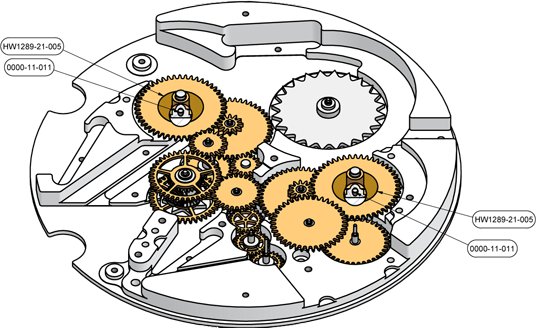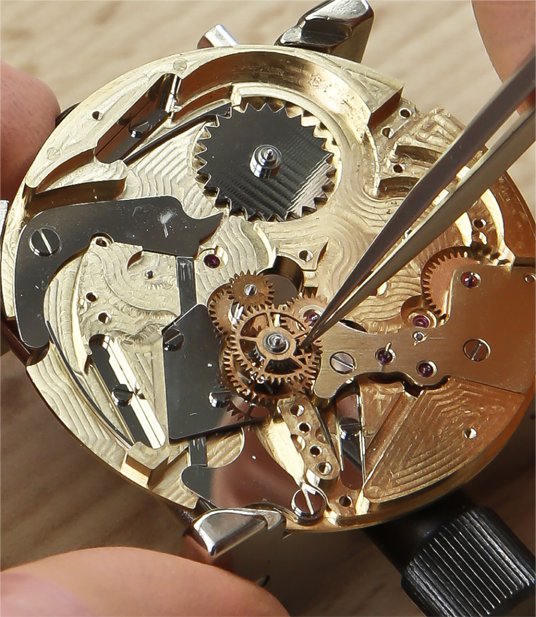Technical complexity ensuring amazing userfriendliness
This remarkably functional patented GMT module enables users to make all adjustments themselves, without the help of a watchmaker. When initializing the watch, a corrector positioned at 10 o’clock on the side of the case serves to set the GMT zone indicator disk in relation to the owner’s place of residence. Using a push-button at 8 o’clock, the second time zone can then be adjusted, with each press corresponding to a one-hour increment. Since the GMT zone indicator disk and the display of the hour are perfectly synchronized, two different adjustment options are available, each of which automatically drives the other. If the user knows the time at a given destination, it can be directly set on the dial at 3 o’clock, while making any potential corrections relating to Daylight Saving Time (known as “summer” time) if it applies to that specific country. If the wearer knows only the GMT zone, the disk between 1 and 2 o’clock can be set and will in turn set the time of the destination. thanks to the distinctive construction of the Pecqueur differential and contrary to classic GMT complications, the rate of the watch remains unperturebed during such ajustments.
When mechanical sophistication meets aesthetic appeal
As the key component in this unusual horological complication, the differential heralds an exceptional approach to watchmaking, propelling mechanics into a whole new artistic dimension. Its cleverly layered construction creates subtle depth effects that may be admired from the dial side. Right from the start of the project, the Centagora developers worked in close cooperation with the Peugeot Design Lab in order to define optimal volumes and ensure perfect harmony between the various displays of the future watch. The differential bridge overlapping the local time subdial occupies a generous area, as if to invite the gaze to plunge into the very heart of the barely perceptible revolutions of this ingenious device. Along the same axis, an aperture reveals the disk indicating the GMT zone of the second time zone, of which the hour appears in an offset subdial at 3 o’clock, also bearing a day/night indicator. Meanwhile, the small seconds hand sweeps steadily around its own display at 6 o’clock. An authentic mechanical symphony performed by no less than 311 parts, including 48 jewels, self-winding Caliber OP 21/1-15 embodies characteristically Swiss precision, with a frequency of 4 Hz (28,800 vibrations/hour). Developed on a VMF 3002 base movement, it is equipped with a twin barrel ensuring a comfortable 50-hour power reserve.





